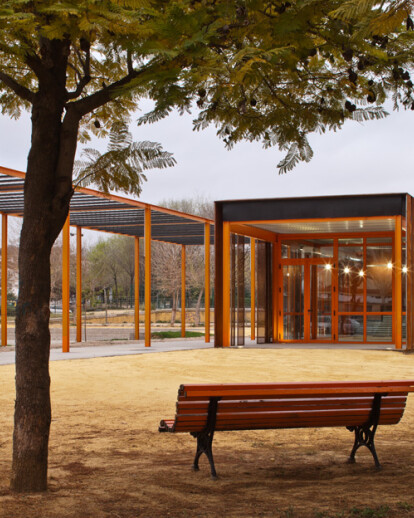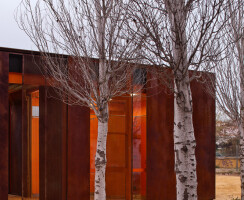The intervention takes place in a park area in which the expectations of the original project didn’t reach the estimated reactions, leaving a marginal area with no treatment other than the concrete cobblestone paving, out of scale and without an intended use. The situation is bound to lack of maintenance of urban furniture and equipment. It is detected lack of recreational areas, as the wooded areas are fenced with hedges that prevent people from resting in the shade.
The project seeks the recovery of this area by incorporating dynamic elements of activity. The original pavement is removed and replaced by a more natural treatment, with the addition of numerous plant elements.
It is important to note the strong railway character of the area from the past, with several old buildings for railroad equipment remaining, which is intended to give cultural uses. The intervention considers a complementary roll of such uses.
Three elements respond to initial ideas: a small grandstand with a stage, a kiosk and a meadow plant as a connection to the rest of the park, which contains the addition of a new tree mass.
The organization of the kiosk area responds to this marked railway character present in the atmosphere. Two prisms displaced relative to each other, as wagons, remain near the station. The proposed use is transferred to the formalization of the two elements. One, as a pergola, is implied only through a structural skeleton, the other, a glass box that contains the kiosk, covered by sheets of cor-ten steel, some of which make sliding doors that open completely, exposing the interior. The materialization of this kiosk searches an industrial and practical reaction, without superfluous additions (also limited by the very economic budget).
For both the grandstand and the stage and so the urban furniture, have been used existing elements in the area. The 80% of the pavement is been recycled from the demolition and the old seats have been restored.





























